-
 Bitcoin
Bitcoin $106,731.2224
-1.05% -
 Ethereum
Ethereum $2,444.9804
-1.20% -
 Tether USDt
Tether USDt $1.0003
0.01% -
 XRP
XRP $2.1882
0.09% -
 BNB
BNB $651.1435
-0.61% -
 Solana
Solana $148.3252
-2.09% -
 USDC
USDC $1.0000
0.01% -
 TRON
TRON $0.2787
0.55% -
 Dogecoin
Dogecoin $0.1598
-3.16% -
 Cardano
Cardano $0.5520
-2.43% -
 Hyperliquid
Hyperliquid $39.0960
-2.64% -
 Bitcoin Cash
Bitcoin Cash $516.9519
2.98% -
 Sui
Sui $2.7011
-2.95% -
 Chainlink
Chainlink $13.0582
-1.71% -
 UNUS SED LEO
UNUS SED LEO $8.9250
-2.53% -
 Stellar
Stellar $0.2359
-0.18% -
 Avalanche
Avalanche $17.3856
-3.73% -
 Toncoin
Toncoin $2.8095
-3.56% -
 Shiba Inu
Shiba Inu $0.0...01121
-1.95% -
 Litecoin
Litecoin $85.2795
-0.85% -
 Hedera
Hedera $0.1471
-2.15% -
 Monero
Monero $319.8004
1.12% -
 Dai
Dai $1.0001
0.01% -
 Ethena USDe
Ethena USDe $1.0001
0.02% -
 Bitget Token
Bitget Token $4.5344
-1.07% -
 Polkadot
Polkadot $3.3224
-2.96% -
 Uniswap
Uniswap $6.9697
-2.75% -
 Aave
Aave $266.1658
-2.25% -
 Pepe
Pepe $0.0...09414
-3.41% -
 Pi
Pi $0.4913
-3.29%
How to quickly transfer Bitcoin from Binance to Bitget
Transferring Bitcoin from Binance to Bitget involves preparing your accounts, following steps like entering the Bitget wallet address, and monitoring the transaction's progress.
Apr 06, 2025 at 05:36 pm
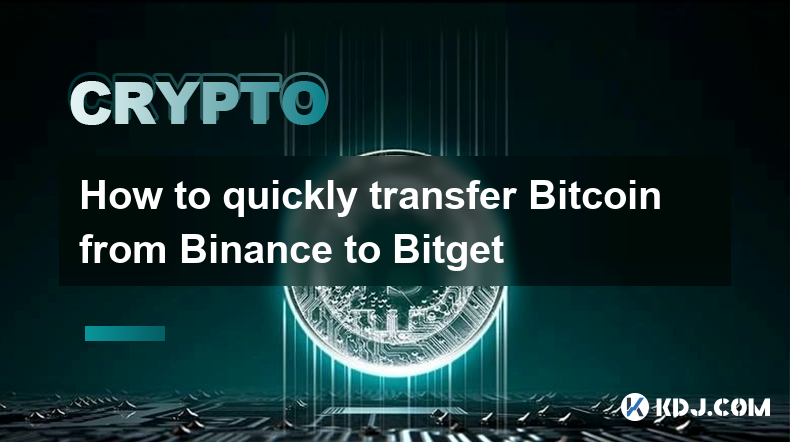
Transferring Bitcoin from Binance to Bitget can be a straightforward process if you follow the right steps. In this guide, we will walk you through the necessary steps to ensure a quick and secure transfer. Understanding the nuances of each platform and ensuring you have the correct information at hand will make the process smoother. Whether you're a seasoned trader or a newcomer to the crypto world, this guide will help you navigate the transfer process efficiently.
Preparing for the Transfer
Before initiating the transfer, it's crucial to prepare adequately. Start by ensuring that you have sufficient Bitcoin in your Binance account to cover the amount you wish to transfer, as well as any potential transaction fees. Next, verify that your Bitget account is fully set up and that you have access to your Bitget Bitcoin wallet address. It's also important to check the current network conditions and fees to avoid any delays or unexpected costs.
Step-by-Step Guide to Transferring Bitcoin from Binance to Bitget
- Log into your Binance account: Ensure you have access to your account and that your two-factor authentication (2FA) is enabled for added security.
- Navigate to your Bitcoin wallet: On Binance, go to the 'Wallet' section, then click on 'Spot Wallet', and find Bitcoin (BTC) in the list.
- Initiate the withdrawal: Click on 'Withdraw' next to Bitcoin. You will be prompted to enter the withdrawal address, which is your Bitget Bitcoin wallet address.
- Enter the Bitget Bitcoin wallet address: You can find this address in your Bitget account under the 'Wallet' section. Make sure to copy and paste the address to avoid any errors.
- Specify the amount to transfer: Enter the amount of Bitcoin you wish to transfer. Be mindful of the minimum and maximum withdrawal limits set by Binance.
- Review and confirm the transaction: Double-check all the details, including the recipient address and the amount. Once you are satisfied, confirm the transaction. You may be required to enter your 2FA code to proceed.
- Wait for the transaction to complete: The transfer time can vary depending on the network congestion and the fees you've chosen. Typically, it can take anywhere from a few minutes to a few hours.
Understanding Transaction Fees and Network Congestion
Transaction fees play a significant role in the speed and cost of your Bitcoin transfer. Binance and Bitget both charge fees for withdrawals, and the Bitcoin network itself has a fee structure based on the size of the transaction and the current network congestion. Higher fees can result in faster transaction times, especially during periods of high network activity. It's advisable to check the current fee rates and network conditions before initiating your transfer to make an informed decision.
Security Measures to Consider
Security is paramount when transferring cryptocurrencies. Always use the official websites and apps of Binance and Bitget to avoid phishing scams. Enable 2FA on both platforms to add an extra layer of security. Never share your private keys or seed phrases with anyone. Additionally, consider using a hardware wallet for storing your Bitcoin if you plan on holding it for an extended period. These measures will help protect your assets during and after the transfer.
Troubleshooting Common Issues
Sometimes, issues can arise during the transfer process. If your transaction is taking longer than expected, check the transaction status on a blockchain explorer using the transaction ID (TXID) provided by Binance. If you've entered the wrong address, unfortunately, there's little that can be done as Bitcoin transactions are irreversible. In such cases, contact the support teams of both Binance and Bitget for assistance. If you encounter any other issues, such as insufficient funds or network errors, double-check your account balances and try the transaction again during a less congested time.
Monitoring Your Transfer
Once you've initiated the transfer, it's important to monitor its progress. You can use a blockchain explorer like Blockchain.com or BlockCypher to track your transaction using the TXID. These tools will show you the current status of your transaction, including the number of confirmations it has received. Once the transaction is confirmed on the Bitcoin network, the Bitcoin should appear in your Bitget account. If it doesn't, reach out to Bitget's customer support for further assistance.
Best Practices for Future Transfers
To ensure smooth and efficient future transfers, consider the following best practices:
- Keep your wallet addresses organized: Save your wallet addresses in a secure place to avoid errors during future transfers.
- Stay informed about network conditions: Regularly check the Bitcoin network's congestion and fee rates to optimize your transfer times and costs.
- Use appropriate fees: If speed is a priority, consider paying higher fees to expedite your transaction.
- Regularly update your security measures: Keep your 2FA enabled and your software up to date to protect your accounts.
Common Questions Related to Transferring Bitcoin from Binance to Bitget
Q: How long does it take to transfer Bitcoin from Binance to Bitget?
A: The transfer time can vary based on network congestion and the fees you choose. Typically, it can take anywhere from a few minutes to a few hours.
Q: What are the fees associated with transferring Bitcoin from Binance to Bitget?
A: Both Binance and Bitget charge withdrawal fees, and the Bitcoin network itself has transaction fees. These fees can vary based on network conditions and the amount you're transferring.
Q: Can I cancel a Bitcoin transfer after it's been initiated?
A: Once a Bitcoin transaction is initiated and broadcast to the network, it cannot be canceled. It's crucial to double-check all details before confirming the transaction.
Q: What should I do if I enter the wrong Bitget wallet address?
A: Unfortunately, Bitcoin transactions are irreversible. If you enter the wrong address, contact the support teams of both Binance and Bitget immediately for assistance, though there's no guarantee of recovery.
Q: How can I ensure the security of my Bitcoin during the transfer?
A: Use the official websites and apps of Binance and Bitget, enable 2FA, never share your private keys or seed phrases, and consider using a hardware wallet for long-term storage.
Q: What should I do if my Bitcoin doesn't appear in my Bitget account after the transfer?
A: Check the transaction status using the TXID on a blockchain explorer. If the transaction is confirmed but the Bitcoin hasn't appeared, contact Bitget's customer support for assistance.
Disclaimer:info@kdj.com
The information provided is not trading advice. kdj.com does not assume any responsibility for any investments made based on the information provided in this article. Cryptocurrencies are highly volatile and it is highly recommended that you invest with caution after thorough research!
If you believe that the content used on this website infringes your copyright, please contact us immediately (info@kdj.com) and we will delete it promptly.
- Powell, Stablecoin Regulation, and Circle's Bold Move: A New York Minute on Crypto's Future
- 2025-07-02 02:30:12
- Ethereum Price, Tom Lee, and Bitcoin: A New Era for Crypto?
- 2025-07-02 02:30:12
- Hoskinson, Ripple, Cardano DeFi: A New Era of Collaboration?
- 2025-07-02 02:35:12
- BlockDAG, ALGO, and the Crypto Trends Shaping 2025
- 2025-07-02 01:50:12
- Cold Wallet, Token, Gains: Is CWT the Smartest Crypto Move?
- 2025-07-02 01:10:12
- Pi Coin's Rocky Ride: Support Levels, Recovery Timeline, and What the Experts Are Saying
- 2025-07-02 01:10:12
Related knowledge
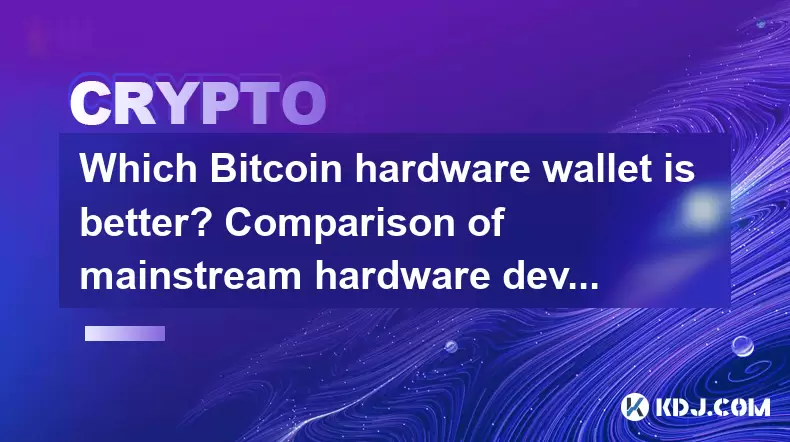
Which Bitcoin hardware wallet is better? Comparison of mainstream hardware devices
Jun 16,2025 at 02:08am
What Is a Bitcoin Hardware Wallet?A Bitcoin hardware wallet is a physical device designed to securely store the private keys associated with your cryptocurrency holdings. Unlike software wallets, which are more vulnerable to online threats, hardware wallets keep private keys offline, significantly reducing the risk of unauthorized access. These devices ...
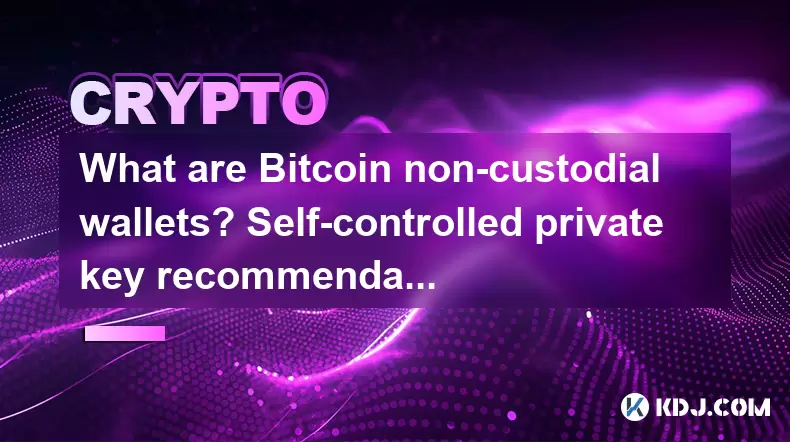
What are Bitcoin non-custodial wallets? Self-controlled private key recommendation
Jun 16,2025 at 11:29pm
Understanding Bitcoin Non-Custodial WalletsA Bitcoin non-custodial wallet is a type of digital wallet where users retain full control over their private keys. Unlike custodial wallets, which are managed by third-party services such as exchanges, non-custodial wallets ensure that only the user can access and manage their funds. This means no intermediary...
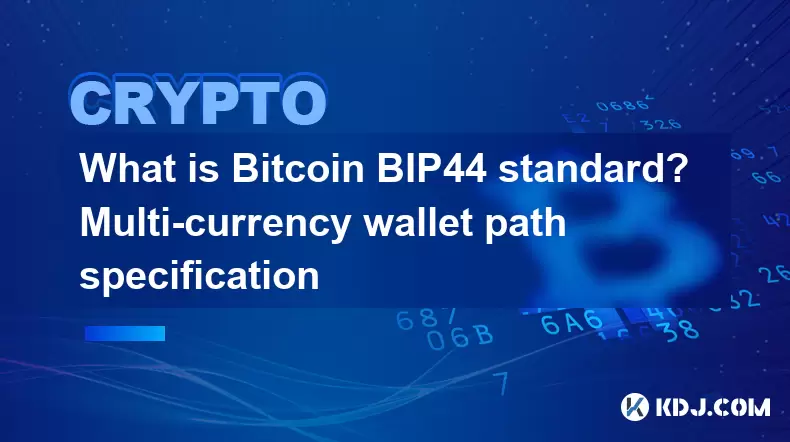
What is Bitcoin BIP44 standard? Multi-currency wallet path specification
Jun 15,2025 at 04:08pm
Understanding the BIP44 Standard in Bitcoin and CryptocurrencyThe BIP44 standard, which stands for Bitcoin Improvement Proposal 44, is a widely adopted hierarchical deterministic wallet structure used across various cryptocurrencies. It defines a structured path format that enables wallets to support multiple currencies while maintaining consistency and...
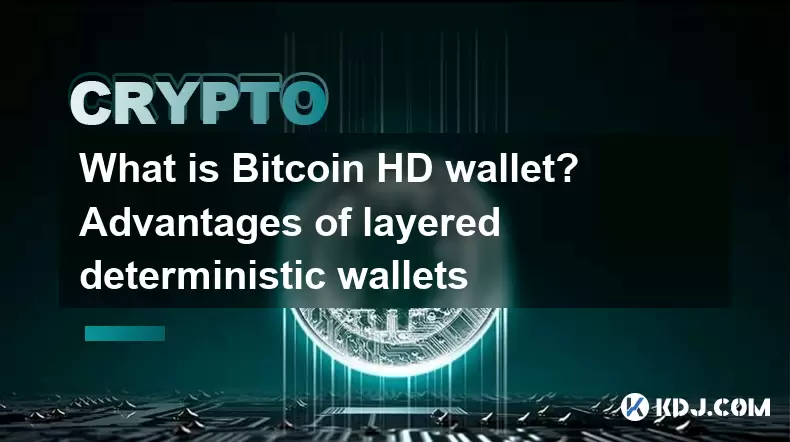
What is Bitcoin HD wallet? Advantages of layered deterministic wallets
Jun 16,2025 at 03:56pm
Understanding Bitcoin HD WalletsA Bitcoin HD wallet, or Hierarchical Deterministic wallet, is a type of cryptocurrency wallet that generates multiple keys and addresses from a single seed phrase. Unlike traditional wallets that create random private keys for each transaction, an HD wallet follows a structured hierarchy to derive keys in a deterministic ...

Is Bitcoin zero-confirmation transaction risky? Zero-confirmation usage scenarios
Jun 15,2025 at 03:57am
Understanding Zero-Confirmation Transactions in BitcoinBitcoin zero-confirmation transactions, often referred to as 'unconfirmed transactions,' are those that have been broadcast to the network but have not yet been included in a block. This means they have not received any confirmations from miners. While these transactions can be useful in certain con...
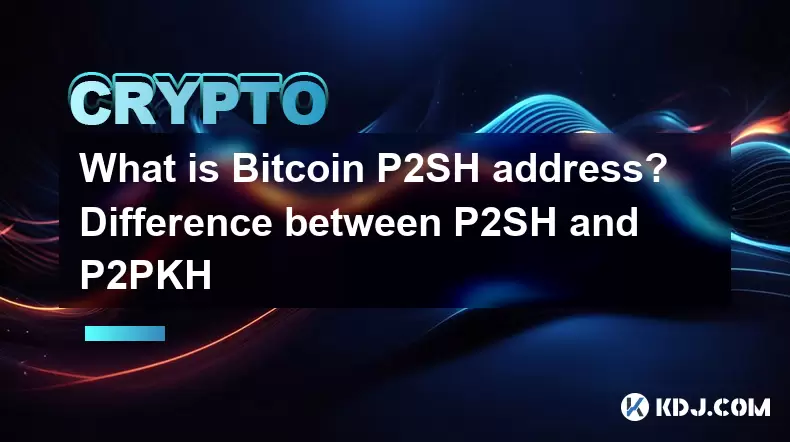
What is Bitcoin P2SH address? Difference between P2SH and P2PKH
Jun 16,2025 at 09:49pm
Understanding Bitcoin P2SH AddressesA Pay-to-Script-Hash (P2SH) address in the Bitcoin network is a type of address that allows users to send funds to a script hash rather than directly to a public key hash, as seen in earlier address formats. This innovation was introduced through BIP 16, enhancing flexibility and enabling more complex transaction type...

Which Bitcoin hardware wallet is better? Comparison of mainstream hardware devices
Jun 16,2025 at 02:08am
What Is a Bitcoin Hardware Wallet?A Bitcoin hardware wallet is a physical device designed to securely store the private keys associated with your cryptocurrency holdings. Unlike software wallets, which are more vulnerable to online threats, hardware wallets keep private keys offline, significantly reducing the risk of unauthorized access. These devices ...

What are Bitcoin non-custodial wallets? Self-controlled private key recommendation
Jun 16,2025 at 11:29pm
Understanding Bitcoin Non-Custodial WalletsA Bitcoin non-custodial wallet is a type of digital wallet where users retain full control over their private keys. Unlike custodial wallets, which are managed by third-party services such as exchanges, non-custodial wallets ensure that only the user can access and manage their funds. This means no intermediary...

What is Bitcoin BIP44 standard? Multi-currency wallet path specification
Jun 15,2025 at 04:08pm
Understanding the BIP44 Standard in Bitcoin and CryptocurrencyThe BIP44 standard, which stands for Bitcoin Improvement Proposal 44, is a widely adopted hierarchical deterministic wallet structure used across various cryptocurrencies. It defines a structured path format that enables wallets to support multiple currencies while maintaining consistency and...

What is Bitcoin HD wallet? Advantages of layered deterministic wallets
Jun 16,2025 at 03:56pm
Understanding Bitcoin HD WalletsA Bitcoin HD wallet, or Hierarchical Deterministic wallet, is a type of cryptocurrency wallet that generates multiple keys and addresses from a single seed phrase. Unlike traditional wallets that create random private keys for each transaction, an HD wallet follows a structured hierarchy to derive keys in a deterministic ...

Is Bitcoin zero-confirmation transaction risky? Zero-confirmation usage scenarios
Jun 15,2025 at 03:57am
Understanding Zero-Confirmation Transactions in BitcoinBitcoin zero-confirmation transactions, often referred to as 'unconfirmed transactions,' are those that have been broadcast to the network but have not yet been included in a block. This means they have not received any confirmations from miners. While these transactions can be useful in certain con...

What is Bitcoin P2SH address? Difference between P2SH and P2PKH
Jun 16,2025 at 09:49pm
Understanding Bitcoin P2SH AddressesA Pay-to-Script-Hash (P2SH) address in the Bitcoin network is a type of address that allows users to send funds to a script hash rather than directly to a public key hash, as seen in earlier address formats. This innovation was introduced through BIP 16, enhancing flexibility and enabling more complex transaction type...
See all articles

























































































